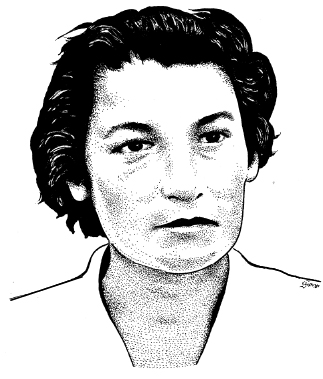 In 2007, at the conclusion of the International Harm Reduction Conference in Warsaw, several Canadian friends and I walked to the part of the city where the Warsaw Ghetto had been. Over the course of a couple-hour walk, during which I reacted quite emotionally to being at the site of vast atrocities and courageous struggles, I wrote the first draft of this Warsaw Ghetto Cycle of four poems. Over the ensuing months, I showed this to my sister, Paula Friedman, who is herself the author of many books and poems, and received many insightful ideas for edits from her.
In 2007, at the conclusion of the International Harm Reduction Conference in Warsaw, several Canadian friends and I walked to the part of the city where the Warsaw Ghetto had been. Over the course of a couple-hour walk, during which I reacted quite emotionally to being at the site of vast atrocities and courageous struggles, I wrote the first draft of this Warsaw Ghetto Cycle of four poems. Over the ensuing months, I showed this to my sister, Paula Friedman, who is herself the author of many books and poems, and received many insightful ideas for edits from her.
<pThese poems have previously appeared in Sam Friedman, Grief and Rage: An American Jew’s Poems on Palestine. Central Jersey Coalition against Endless War. 2015.
I. The walk to the unknown relatives
Here—right here—
this street of apartments,
wide tesserated sidewalk,
a park alive with light.
Here—right here—
this where to which you were escorted
by gray-clad soldiers
whispering of homes and parents,
over-worked bayonets at play.
Here—right here—
your Judenrat decreed:
“submit, don’t think, obey”—
these poor appointed leaders bewildered,
though perhaps of pure souls,
before a soul-searing choice
no Solomon would propound.
Here—right here—
where many rode obedient
these steel-hard rails
into soil unknown.
Here—where some rebelled,
scratched fear in Nazi hearts,
and died.
Here—right here—
is the there where
you do not live,
never resided,
but died to write
hope
you would never see.
II. Abomination
Here,
the monument to ghetto heroes,
sculpted amid shell-flattened rubble
after the War.
Desperate-eyed men of stone
hold guns in rock-firm hands.
A woman agonizes, her breasts bare,
arms stretched upward,
holding a baby whose fingers grasp the sky.
Only men wield weapons, bear guns;
this sole woman seems misplaced,
not really there,
not real,
her rifle erased,
her here-born, here-died heroism
ground rubble
underneath the chisels of men
who did not live, did not die,
here.

Zivia Lubetkin, 1914 – 1978, the only woman on the
High Command of the Jewish Combat Organization
that led the Warsaw Ghetto uprising and one of only 34 Warsaw Ghetto fighters to survive the war.
III. Bunker Monument, Mila 18, Warsaw
Kneeling on the fallen bunker,
fingers lightly touching
this buried soil
of rebelling kin, long ago slain,
tailors,
bakers,
tympanists,
waitresses,
rabbis,
socialists,
Zionists,
communists,
desperadoes all,
heroes all,
late-comer students of history’s laws
learning the guns of revenge—
I get the message:
Continue the struggle,
end this system, this industrialized death,
where nurses and typists must learn the gun,
musicians’ fingers thrust
the knives of hate.
Continue the struggle
until you join us
in death.
IV. Umschagplatz
Under a gray-barked tree
whose limbs scratch at the heavens
like a baby grasping sky, or
the deeds of the Communards,
I stand, behind this confining marble wall
fashioned like the tear-washed sides
of an enclosing boxcar
in a sun-sered city where Jews misled
by their Judenrat—reluctant leaders
traumatized, terrified,
traduced by responsibility—
waited lonely among their nearest,
and whispered rumors
of destined fates
unknown.
Under this living tree
of many years, many tears, I pledge
my grief and my anger to undying struggle
against the reborn Nazis and imperial
Judenrats of liberal moderation,
in all their guises and incarnations.
I pledge my mind, my aging body,
my hopes,
to the struggle, to stretch our aspirations
wide as the tree’s limbs and deep as its roots,
to storm the heavens,
to rewrite our ends.


Leave a Reply